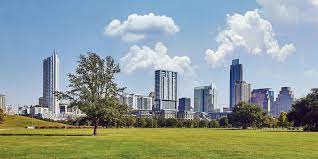Courtesy : think-asia.org
Green exiting cities
Asia’s cities have been the drivers of the economy and have lifted millions
out of poverty. However, the environmental consequences of this rapid
development are apparent, and the citizens of Asia’s urban areas are
increasingly insistent that something should be done. And there is an
investment deficit in Asian cities’ infrastructure spending, mostly in
environmental infrastructure, of some $100 billion per annum.
Asian cities can be more environmentally friendly. The resources are
there to achieve this. Up to 80% of gross domestic product today comes
from urban areas in Asia, and its megacities are nation-sized in population
and economic product. New cities, such as the innovative “eco-towns” in
Japan and “eco-cities” in the People’s Republic of China (PRC), have begun
to put into action a sustainable urban development model.
Existing cities need to change as they grow. In particular, to maximize
livability and minimize energy use and environmental impact, Asian cities need
to align the planning and provision of quality, high-capacity public transport
with the provision of well-serviced high density, mixed-use development.
The bus rapid transit system in Guangzhou, People’s Republic of China, for
example, is integrated with the city’s metro system and other nonmotorized
means of transport. It is also integrated with the planning and zoning of
surrounding areas to foster a dense, pedestrian-friendly environment which
allows easy access to services and employment.
The challenge throughout the region is to provide the green infrastructure
needed to maintain growth while cleaning up the environment. Anyone who
has been in traffic jams in Bangkok, Beijing, Jakarta, Manila, or Mumbai will
know that a new approach is needed.
Asian cities and their hinterlands also have potentially severe global
environmental consequences. This can be seen in the ecological footprints of
Asian cities. Although controversial as an absolute measure, city ecological
footprints provide a relative measure of cities’ resource use intensity and
help us understand their impact. A sustainable footprint is about 1.8 hectares
vi
per person. Today, the average in rural PRC is 1.6 hectares. In Shanghai, it is
7 hectares. The footprint of a typical city in the United States is 9.7 hectares.
The consequence for the environment as the PRC urbanizes and becomes
wealthier is obvious. The constraints of inter-sector and interjurisdictional
coordination, exacerbated by far-reaching decentralization which has
occurred across the region and which has seen capacity-strapped cities and
surrounding rural local governments saddled with “unfunded mandates”,
mean that even “wealthy” cities find it difficult to respond to climate change
imperatives and invest in green infrastructure even if they want to.
To support its developing member countries in more sustainable urban
development, the Asian Development Bank (ADB), under its new Urban
Operational Plan, will analyze the urbanization process in the context of
a country’s economic development and identify the main environmental,
social, and economic development issues relating to the urban sector—as
well as how ADB can add value in the sector—and the proposed areas of
investment focus.
ADB will endeavor to develop longer-term engagements in focus urban
regions. This will provide the opportunity to develop an integrated plan based
on assessments of the environmental, social, and economic priorities for
these regions. The assessment process will identify the key environmental
issues of a city and prioritize investments to address them in an integrated
way across infrastructure sectors to achieve a Green City. ADB, together
with public and private partners, will be involved in investments in water
supply, waste water, solid waste, district heating/cooling, urban transport
(including roads), and energy efficiency.
To foster such investments, two things are needed. The first is to give
cities the capacity and incentive to plan, finance, and implement needed
infrastructure that provides the basis for innovation appropriate to the
competitive advantages of the city and its rural hinterland. The second is to
enable the private sector to participate effectively in this process, leveraging
government resources.
Asia’s cities are rapidly developing in sophistication and confidence.
Despite obvious shortfalls in service provision, there is a developing sense
that, with the right support, incentives, and freedoms, they may be able to
solve their problems and even contribute in a major way to solving global
problems such as greenhouse gas reduction and climate change mitigation.
vi Preface
vii
The challenge is to find ways to channel resources to effective change agents
in subsovereign governments. This would encourage innovative responses
and effective partnerships with both private sector and community groups.
At ADB, we accept this challenge under our new Urban Operational Plan.
This book is intended to provide examples of how this challenge may




